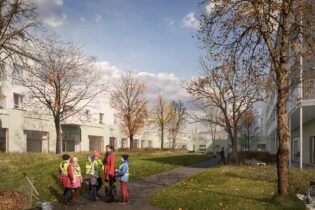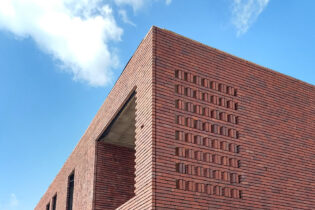‘Ter Meeren’ renovation residential care center and construction of service flats
Neerijse, Belgium, Europe
| K Level / Energy class : | – |
| E Level: | Residential care center 53 – assisted living units 33 |
| Certification: | – |
Project description:
The ‘Ter Meeren’ site is divided into various buildings among which a day care center, an existing recent building that houses a residential care center and an existing, outdated building section with a residential care center and assisted living.
The outdated infrastructure will be demolished and renewed. This existing building houses the heat generation, the distribution of electricity and the distribution and treatment of water. Since the building is being demolished, creative thought had to be given to continue to provide the other buildings with energy and water.
The renovation of the residential care center consists of 4 floors. On the bottom 2 floors there are mainly office spaces and a kitchen with a restaurant area that can also be used as a multipurpose room. The care areas (physiotherapy, hairdresser and dentist) can also be found on these floors. On the bottom floor there is also a technical room where the heat and cold generation for the renovation will take place and where the ventilation group for these floors is located. On the upper 2 floors are the rooms and living spaces for the residents.
A new building is planned for the assisted living quarters, consisting of 3 storeys with a technical part with air group and substation on the bottom storey, a hull part and storage rooms for the assisted living apartments.
The heating of both buildings is done by means of 2 geothermal heat pumps and 1 air / water heat pump. The geothermal heat pumps get their energy from the ground using a btes field (borehole energy storage). The energy is delivered to the premises by means of underfloor heating, which will provide the basic heating, and by means of fan coil units, which will take care of the peak demand.
The hot water is produced by a separate high-temperature geothermal heat pump. This will heat 2 buffer tanks, one for the residential care center and one for the assistance homes. By using a water treatment system, the hot water circulation is also reduced to 45°C instead of 60°C, without risk of legionella formation, which results in significant energy savings.
Cooling is also provided in the building to ensure maximum summer comfort for residents and employees. The cooling is completely passive and is extracted from the btes field via a plate heat exchanger. Delivery to the premises is done using the same delivery elements as those used for heating.
The buildings will be ventilated by means of an air group type system D. The air group for the common areas of the residential care center is located in the basement and on the roof for the rooms and living spaces. The air group for the assisted living units is located in the basement of that building. The air groups are equipped with a heat exchanger that realizes energy transfer between the intake air and the return air. In this way, the ventilation losses as a result of heating the outside air to the desired comfort temperature are significantly reduced. Finally, the pulsed air is after-treated to the desired temperature by means of a battery in order to achieve optimum comfort in the building.
The lighting of the building is controlled in the offices and communal areas on the basis of incoming daylight and presence. Luminaires with LED lighting were chosen for the basic lighting. Furthermore, a photovoltaic installation is foreseen for both buildings.
A call system will also be installed in the buildings to ensure maximum care for residents and visitors.


















